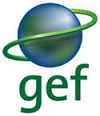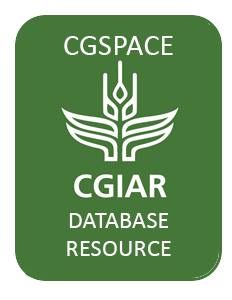Location
The Global Environment Facility (GEF) was established on the eve of the 1992 Rio Earth Summit, to help tackle our planet’s most pressing environmental problems. Since then, the GEF has provided $14.5 billion in grants and mobilized $75.4 billion in additional financing for almost 4,000 projects. The GEF has become an international partnership of 183 countries, international institutions, civil society organizations, and private sector to address global environmental issues.
The GEF’s 18 implementing partners are: Asian Development Bank (ADB), African Development Bank (AFDB), Development Bank of Latin America (CAF), Conservation International (CI), Development Bank of Southern Africa (DBSA), European Bank for Reconstruction and Development (EBRD), Foreign Economic Cooperation Office - Ministry of Environmental Protection of China (FECO), Food and Agriculture Organization of the United Nations (FAO), Fundo Brasileiro para a Biodiversidade (FUNBIO), Inter-American Development Bank (IDB), International Fund for Agricultural Development (IFAD), International Union for Conservation of Nature (IUCN), United Nations Development Programme (UNDP), United Nations Environment Programme (UNEP), United Nations Industrial Development Organization (UNIDO), West African Development Bank (BOAD), World Bank Group (WBG), World Wildlife Fund U.S. (WWF).
The GEF serves as financial mechanism for the following conventions:
- Convention on Biological Diversity (CBD)
- United Nations Framework Convention on Climate Change (UNFCCC)
- Stockholm Convention on Persistent Organic Pollutants (POPs)
- UN Convention to Combat Desertification (UNCCD)
- Minamata Convention on Mercury
- The GEF, although not linked formally to the Montreal Protocol on Substances That Deplete the Ozone Layer (MP), supports implementation of the Protocol in countries with economies in transition.
The GEF administers the LDCF and SCCF which were established by the Conference of the Parties (COP) to the UNFCCC. The GEF also administers the Nagoya Protocol Implementation Fund (NPIF) that was established by the Convention on Biological Diversity (CBD). In addition, the GEF Secretariat hosts the Adaptation Fund Board Secretariat.
Members:
Resources
Displaying 26 - 30 of 41Innovative grants mechanism(IGM) projects profile
The Government of Namibia has identi ed land degradation as a serious problem which demands remedial intervention, and recognizes that integrated ecosystem management strategies are needed to e ectively address the underlying causes.The goal of the Country Pilot Partnership for Integrated Sustainable Land Management (CPP-ISLM) is to work towards combating land degradation by using integrated cross-sectoral approaches, which would enable Namibia to ensure environmental sustainability as well as the protection of dry land ecosystems and their functions.
Environmental Economics Toolkit: Analyzing the Economic Costs of Land Degradation& the benefits of Sustainable Land Management.
This Toolkit has been prepared to support the design and implementation of Sustainable Land Management (SLM) programs. The specific purpose of the Toolkit is: to inform the user of the approaches that can be followed to analyze and value the economic costs of land degradation and the benefits of sustainable land management. ‘Land’ is interpreted broadly in the Toolkit, also including wetlands and coastal zones. The Toolkit contains five Tools that together present a detailed description of the various relevant ecological and economic assessment methodologies.
Forest ecosystem services: can they pay our way out of deforestation?
This paper first provides a brief overview of what are and what represent forest ecosystem services. Then it considers the issues of price and valuation, and shows that valuation itself is not a solution but merely a tool. Considering then the reasons of the overall degradation of forest ecosystem services it shows that the main reasons tend to be fundamental: deforestation most often happens because it pays for local people - not so much because the institutionally created arrangements are perverse.
Tackling land degradation and desertification: GEF - IFAD partnership
Desertification occurs in drylands,which span a third of the earth ’s land surface in over 110 countries.It influences the lives of about 500 000 people – the so-called environmental refugees –including many of the world ’s poorest and most marginalized populations. Each year 12 million hectares (ha)are lost to deserts.That is enough land to grow 20 million tonnes of grain.
Tackling land degradation and desertification: GEF - IFAD partnership
Desertification occurs in drylands,which span a third of the earth ’s land surface in over 110 countries.It influences the lives of about 500 000 people – the so-called environmental refugees –including many of the world ’s poorest and most marginalized populations. Each year 12 million hectares (ha)are lost to deserts.That is enough land to grow 20 million tonnes of grain.



